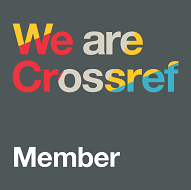The Development of Problem-Solving Ability in Chemistry Proposition on the Topic of Stoichiometry by Using the 5E’s of Inquiry-Based Learning Combined with the FOPS Strategy for Grade 10 Students
Abstract
Keywords
References
Artdej, R. (2010). Thai Grade 11 students’ alternative conceptions for acid–base chemistry. Research in Science & Technological Education, 28(2): 167–183. http://dx.doi.org/10.1080/02635141003748382
Barman, & C.R. (1992). An Evaluation of the Use of a Technique Designed to Assist Prospective Elementary Teachers use the Learning Cycle Science Textbooks. School Science and Mathematics,92(February1992). http://dx.doi.org/10.1111/j.1949-8594.1992.tb12142.x
Baroody, A. J. (1993). Problem Solving, Reasoning, and Communicating, K-8 Helping Children Think Mathematically. New York: Macmillan Publishing Company.
http://dx.doi.org/10.1088/1742-6596/1808/1/012050
Charles, R., & Lester, F. K. (1982). Teaching problem solving what why & how. Palo Alto, Carifornia: Dale Semour Publications.
Dahsah, C. (2007). Thai Grade 10 and 11 Students’ Conceptual Understanding and Ability to Solve Stoichiometry Problems. Research in Science and Technological Education, 25(2), 227-241.
http://dx.doi.org/10.1080/02635140701250808
Dalziel, K. H. , Grismer, L. , & Thompson, S. (2008). Teaching and Learning Research Exchange Exploring Cognitive Strategy Instruction (SCI), Schema-Based Instruction (SBI), and Strategic Content Learning (SCI) with Students with Learning and Developmental Disabilities in Higher-Order Mathematics: Two
Devine T.G. (1986). Teaching reading comprehension from theory to practice. Newton : Allyn and Bacon
Gilbert, J. K. (2006). On the nature of context in chemical education. International Journal of Science Education, 28: 957–976.
https://doi.org/10.1080/09500690600702470
Gokhan, D., & Gulsen, C. (2014). The effect of laboratory activities based on 5e model of constructivist approach on 9th grade students' understanding of constructivist approach on 9th grade students' understanding of solution chemistry. ProcediaSocial and Behavioral Sciences, 116, 3120-3124. http://dx.doi.org/10.1016/j.sbspro.2014.01.719
Han, K., and Kim, Y. (2016). The effect of Polya’s heurictics in mathematical problem solving of mild disability students. East Asian Mathematical Journal, 32(2): 253– 289.
http://dx.doi.org/10.7858/eamj.2016.020
Hargen, P. (2000, November). Cooperative learning in organic ii. increased retention on a computer campus Journal of Chemical Education, 11, 1441-1444.http://dx.doi.org/10.1021/ed077p1441
Herganhahn, B.R. and Olson, M. (1993). An introduction to theories of learning 4th ed. United States: Prentice Hall.
Ijirana, I., Aminah , S., Supriadi, S., & Poba, D. (2021). The Ability of Chemistry Problem Solving of Senior High School Students in Palu Sulawesi Tengah. Jurnal Akademika Kimia, 10(2), 64–71. https://doi.org/10.22487/j24775185.2021.v10.i2.pp64-71
Jitendra, A. K. , & Hoff, K. (1996). The Effects of Schema-Based Instruction on the Mathematical Word- Problem-solving Performance of Students with Learning Disabilities. Journal of Learning Disabilities, 29 (4), 422-443. https://doi.org/10.1177/002221949602900410
Jitendra, A. K. , & et al. (2010). Schema-Based Instruction: Facilitating Mathematical Word Problem Solving for Students with Emotional and Behavioral Disorders. Preventing School Failure, 54 (3), 145–151. http://dx.doi.org/10.1080/10459880903493104
Jitendra, A. K. , & Star. J. R. (2011). Meeting the Needs of Students With Learning Disabilities in Inclusive Mathematics Classrooms: The Role of Schema - Based Instruction on Mathematical Problem Solving. Theory into Practice, 50 (1), 12 19. http://dx.doi.org/10.1080/00405841.2011.534912
Kemmis, S., & McTaggart, R. (1988). The action research planner. Geelong: Deakin university.
Krulik, S. and Jesse A. Rudnick.(1996). The New Sourcebook for Teaching Reasoning and Problem Solving in Junior and Senior High School. Boston : Allyn and Bacon.
Le Thi Dang Chi, Tran Trung Ninh. (2018). Assessment of Problem Solving Ability and Creativity in Chemistry Teaching at Secondary Schools in Binh Dinh, Vietnam. American Journal of Educational Research, 6(6), 757-762. http://dx.doi.org/10.12691/education-6-6-26
Marshall, S. (1995). Schemas in problem solving. New York : Cambridge University
Na,K. E. (2009) .The Effect of Schema – Based Intervention on the Mathematical Word Problem Solving Skills of Middle School Students with Learning Disabilities The University of Texas at Austin.
Reys, R. E., Suydam, M. N., & Lindquist, M. M. (1995). Helping children learn mathematics (4th ed). Boston: Allyn and Bacon.
Rockwell, Sarah B. (2012). Teaching students with autism to solve addtive word problems using schema-based strategy instruction. Ed.D.
Rumelhart, D. E. (1981). “The building blocks of cognition” In Guthrie. J , ed. Comprehension and reading research reviews. p. 5. NJ :Lawrence rence
Skinner, B.F. (1938). The behavior of organisms: An experimental analysis. New York: Appleton-Century-Crofts
Skripsi, B. (2022). Pengembangan Bahan Ajar Model Schema-Based Instruction (SBI) Dengan Strategi FOPS Pada Materi Kaidah Pencacahan.uinjkt.ac.id
Smith, K.J. (1991). Problem Solving. California : Book/Cole.
DOI: http://dx.doi.org/10.17977/um048v31i1p%25p
Refbacks
- There are currently no refbacks.
Copyright (c) 2025 Jurnal Ilmu Pendidikan

This work is licensed under a Creative Commons Attribution 4.0 International License.
| Jurnal Ilmu Pendidikan |
![]() Jurnal Ilmu Pendidikan is licensed under a Creative Commons Attribution 4.0 International License.
Jurnal Ilmu Pendidikan is licensed under a Creative Commons Attribution 4.0 International License.

2.png)
1.png)
1.png)
1.png)
1.png)
4.png)
.png)
1.png)
.png)
.png)


3.png)
1.png)
1.png)


